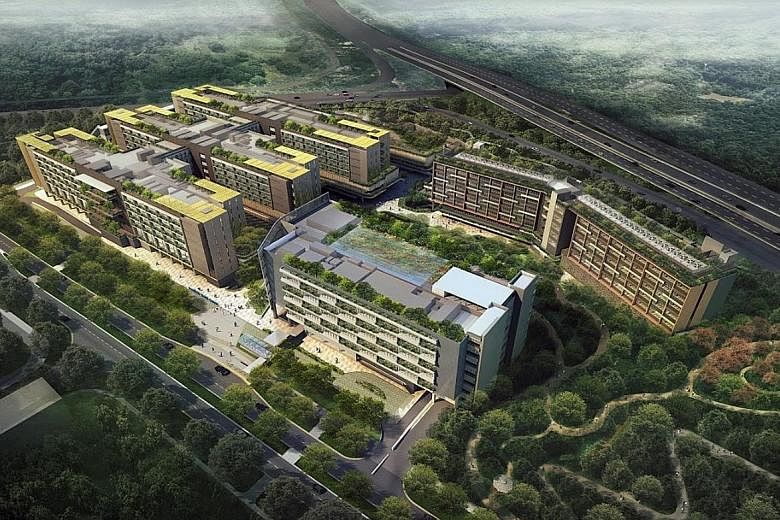With temperatures in Singapore set to rise with climate change, the country needs to find new ways to keep its urban landscape cool, said researchers at a recent lecture organised by the National Development Ministry's Centre for Liveable Cities.
The ideas they came up with for Singapore's dense urban landscape and hot weather included designing buildings and common spaces to lower temperatures indoors, as well as finding innovative ways to manage the urban heat island effect so that people can stay cool without dialling up the air-conditioning.
Taking these steps may result in significant electricity savings for a family, the researchers pointed out at the Aug 6 lecture on Building And Cooling Singapore In An Era Of Climate Change held at the URA Centre.
In a subsequent interview with The Straits Times (ST), Professor Subodh Gautam Mhaisalkar of Nanyang Technological University said: "If outdoor temperatures rise, higher cooling power from air-conditioners will be required just to maintain the same temperature."
He said cooling panels would be a good alternative to reduce indoor ceiling temperatures by around 10 deg C to 15 deg C, instead of lowering air-conditioning temperatures.
Mr Michael Leong, director at SAA Group Architects who was on the panel discussing the issue at the lecture, called for passive design - a way to design structures that naturally cool areas without the excessive use of air conditioning.
"We can design buildings and structures to be naturally well-ventilated, without requiring extra machines like air-conditioners or ceiling fans to cool down indoor areas," he said. "We can try to bring interior spaces 2 deg C cooler than the temperature outside, with cross-ventilation and high ceilings. This will allow spaces to be comfortable in terms of temperature, even before ceiling fans are switched on."
He also proposed that physical urban structures could be planned to cool areas.
Mr Leong later told ST that the passive design features of the Woodlands Health Campus hospital facility can bring about 30 per cent in energy savings. This is because the structures are orientated in a north-south direction, minimising the heat trapped in the building and maximising wind flow.
Roads in the campus are built underground, preventing the asphalt surfaces from gaining and retaining heat during the day. This reduces the need to ramp up energy use to keep the building cool for patients.
These architectural methods to keep outdoor and indoor temperatures comfortable in Singapore tie in with the National Research Foundation-funded project Cooling Singapore, an ongoing initiative to develop solutions to urban heat.
Researchers, agencies join forces to develop solutions
The project aims to combat the urban heat island effect - a phenomenon in which buildings, roads and vehicles release heat into their surroundings, particularly at night.
This causes significant differences in temperature of up to 7 deg C between Singapore's downtown area and less built-up areas.
The project has developed more than 80 strategies to minimise the effect of these urban heat islands.
They range from the use of vegetation to laying out blocks to create shade, to creating water bodies and features to mitigate the heat.
Researchers at Cooling Singapore are also working with local agencies to verify the results of their urban heat mapping.
As of now, the central area is home to the most urban heat islands, said Dr Gerhard Schmitt, professor of information architecture at the Swiss Federal Institute of Technology Zurich, and lead principal investigator of Cooling Singapore. "In Cooling Singapore 2.0, which we hope to kick off next year, we intend to build a system using artificial intelligence and big data, integrating information from Singapore agencies and universities," said Dr Schmitt.
"We want to reduce the heat felt by people, especially at night when heat trapped in HDB blocks during the daytime might be released into the building. With this simulator, we can test realistic scenarios to combat the heat islands in Singapore," he said, referring to the Urban Climate Management System.
The simulator translates planning scenarios into models, which are then evaluated to test what urban climate conditions might result from the scenarios.
"The impact of these scenarios on the economy, the environment, and the health of the people in the area can then be evaluated. The original plans being tested can be modified further and later prototyped to get the best results," Dr Schmitt said.


